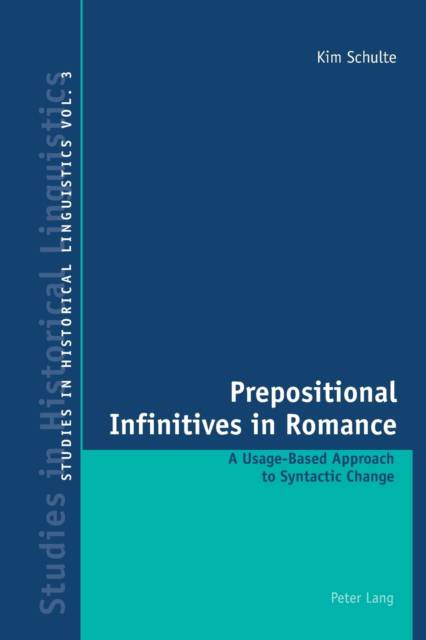
- Afhalen na 1 uur in een winkel met voorraad
- Gratis thuislevering in België vanaf € 30
- Ruim aanbod met 7 miljoen producten
- Afhalen na 1 uur in een winkel met voorraad
- Gratis thuislevering in België vanaf € 30
- Ruim aanbod met 7 miljoen producten
Zoeken
€ 82,95
+ 165 punten
Omschrijving
This book examines the present-day distribution and diachronic evolution of a set of infinitival structures in Spanish, Portuguese and Romanian, making use of extensive corpus data and investigating how pragmatic factors and usage patterns interact with syntax. After a contrastive account of the patterns of clausal subordination in Latin and Romance, the rise of prepositional infinitives is traced through the documented history of the three languages, revealing astonishing parallels in their development. The analysis of the data shows how cognitive principles such as reanalysis and entrenchment combine with parameters such as relevance and usage frequency to cause syntactic change. Beyond providing a genuine explanation for the observed processes in the Romance languages, this study offers new evidence for the existence of language-independent, cross-linguistically applicable principles and mechanisms in language change.
Specificaties
Betrokkenen
- Auteur(s):
- Uitgeverij:
Inhoud
- Aantal bladzijden:
- 414
- Taal:
- Engels
- Reeks:
- Reeksnummer:
- nr. 3
Eigenschappen
- Productcode (EAN):
- 9783039113279
- Verschijningsdatum:
- 6/12/2007
- Uitvoering:
- Paperback
- Formaat:
- Trade paperback (VS)
- Afmetingen:
- 152 mm x 229 mm
- Gewicht:
- 548 g

Alleen bij Standaard Boekhandel
+ 165 punten op je klantenkaart van Standaard Boekhandel
Beoordelingen
We publiceren alleen reviews die voldoen aan de voorwaarden voor reviews. Bekijk onze voorwaarden voor reviews.











